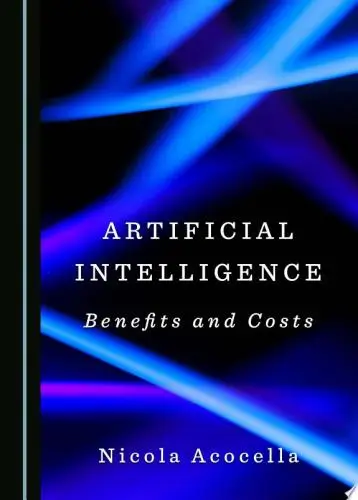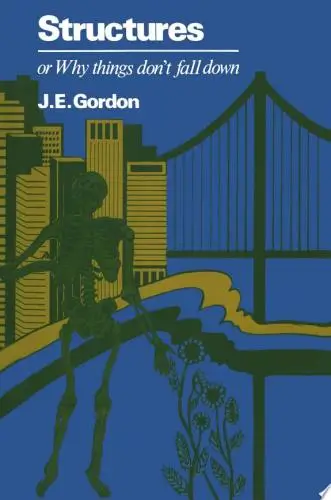The Innovators
How a Group of Hackers, Geniuses, and Geeks Created the Digital Revolution
What's it about?
The Innovators unfolds the riveting journey of the digital revolution, spotlighting the brilliant minds behind the world's most groundbreaking technological advancements. From Ada Lovelace, who pioneered computer programming in the 1840s, to the creators of the internet, Isaacson weaves a narrative that celebrates collaboration over individual genius. This compelling read not only charts the history of computers and the internet but also illuminates the human ingenuity and teamwork that propelled the digital age forward.
About the Author
Walter Isaacson is an American author and journalist known for his biographies of historical figures such as Steve Jobs, Albert Einstein, and Leonardo da Vinci. His writing combines deep research with engaging storytelling, focusing on the creativity and innovation that shaped his subjects' contributions to society.
10 Key Ideas of The Innovators
Collaboration Unlocks Innovation
Innovation is not the product of solitary geniuses but often results from team efforts where diverse skills and perspectives come together.
Collaboration across different disciplines can lead to breakthroughs that individual efforts might miss.
This approach combines unique insights, fostering an environment where creative solutions emerge from the synthesis of varied ideas.
Learn DeeperSeek Out Diverse Perspectives: Actively look for opportunities to collaborate with people from different backgrounds, industries, and areas of expertise. This could mean joining interdisciplinary groups or forums online, attending workshops outside your comfort zone, or simply reaching out to someone whose work you admire but is not directly related to your field.
Foster an Open Environment: Encourage open dialogue and the sharing of ideas within your team or community. Make it a point to listen actively and value contributions from all members, regardless of their rank or experience. This can be as simple as organizing regular brainstorming sessions where everyone is encouraged to speak up.
Experiment Collaboratively: Don’t be afraid to embark on joint projects that allow for experimentation and learning from failures together. This could involve setting up a hackathon, working on a side project with colleagues from different departments, or even partnering with another organization to tackle a common challenge.
Leverage Technology for Collaboration: Utilize digital tools and platforms that facilitate collaboration across distances. This could mean using project management software, collaborative coding platforms, or even virtual reality spaces to brainstorm and prototype ideas together, regardless of physical location.
- Example
A tech startup forms a partnership with a local university, combining the startup's agile development methods with the university's deep research capabilities. Together, they develop a groundbreaking environmental monitoring system that uses AI to predict pollution patterns more accurately.
- Example
A graphic designer, a software developer, and a marketer come together to create an app that gamifies learning for children with learning disabilities. Their diverse skill sets allow them to create an app that’s not only educational but also engaging and easy to navigate for both children and parents.
Embrace Failure as a Stepping Stone to Success
The path to innovation is paved with failures.
Each failed attempt is a learning opportunity, offering valuable insights that can guide future efforts.
By embracing failure, innovators can push beyond traditional boundaries, refine their ideas, and eventually achieve breakthroughs that would not have been possible without the lessons learned from previous setbacks.
Learn DeeperStart a Failure Journal: Keep a dedicated notebook or digital document where you jot down your failures, big or small. More importantly, reflect on what went wrong, what you learned, and how you can improve next time. This practice turns failures into lessons.
Set Aside Time for Reflection: Regularly schedule time to review your projects and endeavors, focusing on those that didn't go as planned. Ask yourself what the initial goals were, where things veered off course, and how different approaches might have led to better outcomes.
Celebrate Small Wins and Failures Alike: Create a culture (whether at work or home) where both successes and failures are acknowledged and celebrated. This could be as simple as sharing a weekly 'fail' that taught you something new, thereby normalizing the process of learning from mistakes.
Implement a 'Test and Learn' Approach: Before fully committing to a new idea or project, conduct small, low-risk experiments to test its viability. This approach allows you to fail fast and learn quickly, minimizing potential losses while maximizing the insights gained from each attempt.
- Example
Thomas Edison's invention of the light bulb is a classic example. He famously said, 'I have not failed. I've just found 10,000 ways that won't work.' Each failed attempt brought him closer to success, demonstrating the value of persistence and learning from failure.
- Example
The story of Dyson vacuum cleaners, where James Dyson went through 5,126 prototypes before finalizing his revolutionary design. This journey underscores the importance of embracing failure as part of the innovation process, leading to a product that changed the industry.
The Importance of Timing in Innovation
Introducing an innovative idea at the right time is crucial for its success.
An invention brought to market too early may fail because society isn't ready for it, while being too late can mean missing the window of opportunity.
Understanding market readiness and societal needs can help innovators align their inventions with the optimal moment for launch.
Learn DeeperResearch and Understand Your Market: Before launching your innovation, spend time understanding the current market trends, needs, and gaps. This can involve conducting surveys, analyzing competitors, and staying updated with industry news.
Test Your Idea with a Target Audience: Before a full-scale launch, test your product or service with a small, representative segment of your target audience. Gather feedback on its usability, relevance, and any potential improvements.
Monitor Societal Trends and Technological Advancements: Keep an eye on broader societal trends and technological advancements. This can help you anticipate changes in consumer behavior and adapt your innovation accordingly.
Be Flexible and Ready to Pivot: If you realize your timing might be off, be prepared to pivot your strategy. This could mean delaying your launch, tweaking your product, or even targeting a different market segment.
Build a Strong Network: Connect with other innovators, potential customers, and industry experts. Networking can provide valuable insights into the right timing for your innovation and open up opportunities for collaboration.
- Example
The introduction of the smartphone by Apple in 2007 capitalized on the convergence of internet connectivity, touch screen technology, and consumer readiness for mobile computing, making it a timely innovation.
- Example
Netflix's shift from DVD rentals to streaming services in the late 2000s took advantage of increasing broadband penetration and changing consumer preferences towards on-demand entertainment, illustrating the importance of timing in innovation.
Leverage Interdisciplinary Knowledge
Breakthrough innovations often occur at the intersection of different fields.
By integrating knowledge from various disciplines, innovators can create novel solutions that address complex problems in unique ways.
This interdisciplinary approach encourages thinking outside the box and leads to the development of products and services that redefine existing categories.
Learn DeeperDiversify Your Learning: Make a conscious effort to learn something new outside your primary field of interest or expertise. This could be through online courses, books, or even attending workshops and seminars.
Collaborate Across Disciplines: Seek opportunities to work on projects with people from different backgrounds. This could be within your workplace, in community projects, or by joining interdisciplinary groups online.
Apply Cross-Disciplinary Thinking to Problem-Solving: Whenever you face a challenge, consciously apply knowledge or techniques from other fields to find a solution. This practice can lead to innovative approaches that wouldn't be obvious if you only considered the problem from a single perspective.
Create a Personal Innovation Journal: Keep a journal where you note down ideas, insights, and observations from various fields. Regularly review and think about how these can intersect to create new opportunities or solutions.
- Example
Steve Jobs famously combined his understanding of typography and design (from calligraphy) with technology to develop the first Macintosh computer, which revolutionized personal computing with its graphical user interface.
- Example
The development of CRISPR gene editing technology is a result of interdisciplinary collaboration between biochemistry, microbiology, and biophysics, leading to groundbreaking advancements in genetic engineering.
User-Centric Design Drives Adoption
Designing with the end-user in mind ensures that innovations meet real needs and are user-friendly.
A focus on user experience can significantly enhance the adoption and success of new technologies.
Innovators should prioritize understanding their target audience, including their habits, preferences, and challenges, to develop solutions that are both impactful and widely embraced.
Learn DeeperIdentify Your Audience: Start by clearly defining who your target users are. Consider creating personas that represent your typical users, including their age, interests, challenges, and goals. This will help you tailor your design to meet their specific needs.
Gather User Feedback Early and Often: Don't wait until your product or service is fully developed to seek user feedback. Use surveys, interviews, and usability tests to gather insights from your target audience throughout the development process. This can help you make necessary adjustments early on.
Simplify Your Design: Aim for simplicity in your design. A user-friendly interface should be intuitive, with a clear hierarchy of information and minimal clutter. Think about the most straightforward way for users to accomplish their goals and eliminate any unnecessary steps or complexity.
Prioritize Accessibility: Ensure that your product is accessible to as many people as possible, including those with disabilities. This includes considering color contrasts, text sizes, and providing alternative ways to navigate or interact with your product.
Iterate Based on Feedback: Use the feedback you receive to continually improve your product. Be open to making changes based on what you learn from your users. Remember, the goal is to create something that not only meets their needs but also provides a delightful experience.
- Example
A mobile app developer conducts user interviews to understand the pain points of managing personal finances. They then design an app with a simple, intuitive interface that allows users to track their spending, set budgets, and receive personalized savings tips, ensuring it's accessible to users with varying levels of tech-savviness.
- Example
A website designer for an online bookstore uses analytics to discover that many users abandon their shopping carts because the checkout process is too complicated. They simplify the process to a few steps, use clearer call-to-action buttons, and incorporate feedback from users to make the site more navigable, resulting in increased sales and customer satisfaction.
Deeper knowledge. Personal growth. Unlocked.
Unlock this book's key ideas and 15M+ more. Learn with quick, impactful summaries.
Read Full SummarySign up and read for free!
The Innovators Summary: Common Questions
"Innovation requires having at least three things: a great idea, the ability to execute, and the luck to succeed." - Walter Isaacson, The Innovators
The Innovators delves into the history of technology and the individuals behind groundbreaking inventions like the computer and the internet. Isaacson expertly weaves together narratives of pioneers such as Ada Lovelace, Alan Turing, and Bill Gates, showcasing their struggles and triumphs. The chapters on the collaborative efforts that led to major advancements were particularly engaging, illustrating the importance of teamwork and building on the ideas of others.
This book is a must-read for anyone interested in understanding the evolution of technology and innovation. It not only provides insight into the minds of visionaries but also emphasizes the significance of collaboration in pushing boundaries. Similar to Isaacson's other works like Steve Jobs, The Innovators is a compelling blend of history, biography, and technology that leaves a lasting impression.
Experience Personalized Book Summaries, Today!
Discover a new way to gain knowledge, and save time.
Sign up for our 7-day trial now.
No Credit Card Needed

Similar Books

Mathematics for Machine Learning
Marc Peter Deisenroth
Clinical Microbiology
Parslow
Medical Laboratory Science Review
Robert R Harr
Superagency
Reid Hoffman
Artificial Intelligence
Nicola Acocella
Frankenstein
Mary Shelley
The Circle
Dave Eggers
Roitt's Essential Immunology
Peter J. Delves
Laws of UX
Jon Yablonski
Structures
J. GordonTrending Summaries

Peak
Anders Ericsson
Never Split the Difference
Chris Voss
Smart Brevity
Jim VandeHei
The Psychology of Money
Morgan Housel
The First 90 Days
Michael D. Watkins
Atomic Habits
James Clear
Thinking, Fast and Slow
Daniel Kahneman
The Body Keeps the Score
Bessel van der Kolk M.D.
The Power of Regret
Daniel H. Pink
The Compound Effect
Darren HardyNew Books

The ^AOxford Handbook of Job Loss and Job Search
Ute-Christine Klehe PhD
Job Interviews For Dummies®
Joyce Lain Kennedy
Job Interviews In A Week
Alison Straw
Handbook of Career Development
Gideon Arulmani
The Art of Spending Money
Morgan Housel
$100M Offers
Alex Hormozi
A Candle for Kiri
Edna Mae Holm
Principles of Marketing, Global Edition
Gary Armstrong
Serpent Rising: The Kundalini Compendium
Neven Paar

